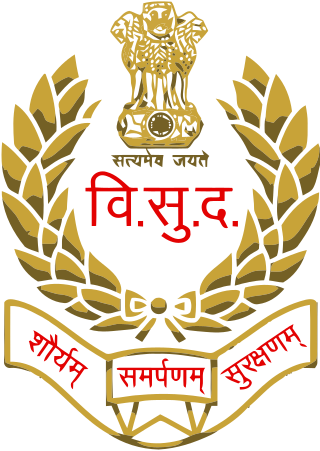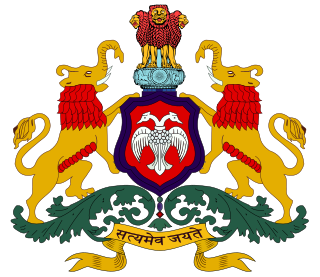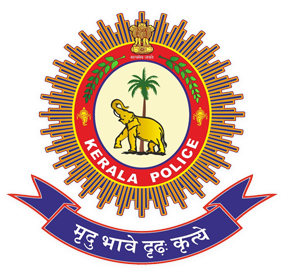
The Indian Police Service is a civil service under the All India Services. It replaced the Indian Imperial Police in 1948, a year after India became independent from the British Empire.

Transit police are specialized police agencies employed either by a common carrier, such as a transit district, railway, railroad, bus line, or another mass transit provider or municipality, county, district, or state.

Law enforcement in India is imperative to keep justice and order in the nation. Indian law is enforced by a number of agencies. Unlike many federal nations, the constitution of India delegates the maintenance of law and order primarily to the states and territories.

Security police usually describes a law enforcement agency which focuses primarily on providing security and law enforcement services to particular areas or specific properties. They may be employed by governmental, public, or private institutions. Security police are generally considered distinct from security guards as security police personnel typically hold some level of law enforcement authority. The exact powers held by security police vary widely between jurisdictions. Examples of these types of agencies include the U.S. FBI Police, the Indian Central Industrial Security Force, and the British Civil Nuclear Constabulary.

The Central Industrial Security Force (CISF) is a federal police organisation in India under the Ministry of Home Affairs. It is one among the Central Armed Police Forces (CAPF). CISF provides security to over 356 industrial units, government infrastructure projects and facilities and establishments located all over India. These include atomic power plants, space installations, mines, oil fields and refineries, major ports, heavy engineering, steel plants, barrages, fertiliser units, airports and hydroelectric/thermal power plants owned and controlled by Central Public Sector Undertakings (PSUs), and currency note presses.

The Special Protection Group (SPG) is an agency of the Government of India whose sole responsibility is protecting the Prime Minister of India and, in some cases, his or her family. It was formed in 1988 by an Act of the Parliament of India. The SPG protects the Prime Minister at all times both in India and abroad, as well as the Prime Minister's immediate family members residing with them at their official residence. Family members, however, may decline security.
The All India Services (AIS) comprises three Civil Services of India common to the centre and state governments, which includes the Indian Administrative Service (IAS), the Indian Police Service (IPS), and the Indian Forest Service (IFS). Civil servants recruited through All India Services by the central government are assigned to different state government cadres. Some civil servants may, later in their career, also serve the centre on deputation. Officers of these three services comply to the All India Services Rules relating to pay, conduct, leave, various allowances etc.
Law enforcement in Bhutan is the collective purview of several divisions of Bhutan's Ministry of Home and Cultural Affairs. Namely, the Ministry's Bureau of Law and Order, Department of Immigration, and Department of Local Governance are responsible for law enforcement in Bhutan. The Ministry of Home and Cultural Affairs is itself a part of the Bhutanese Lhengye Zhungtshog, or Council of Ministers. Generally, law enforcement in Bhutan is the responsibility of executive agencies. As a means of enforcement, police and immigration authorities prosecute cases in the judicial system through the Attorney General of Bhutan.

The West Bengal Police is one of the two police forces of the Indian state of West Bengal. The other being the Kolkata Police, which has a separate jurisdiction across Kolkata.
The Indian Railways Institute of Signal Engineering and Telecommunication, Secunderabad is an Institute based on Signal Engineering and Telecommunications. Located in Secunderabad, this institute is run by the Ministry of Railways (India), Indian Railways in 1957 as a subsidiary of Indian Railways.
The Superintendent of Police (SP) is a rank in Indian police forces held by an officer who typically heads a rural police district. Other officers of the same rank may lead specialised wings or units. In cities under commissionerate system, an SP may serve as the Deputy Commissioner of Police (DCP) under the Commissioner of Police. The SP reports directly to the district magistrate (collector), the administrative head of a revenue district, who has general control and direction over police administration. Additionally, an SP sends monthly reports to the Director General of Police (DGP) via the Inspector General of Police (IGP) and the Deputy Inspector General of Police (DIG).

The Ministry of Home Affairs, or simply the Home Ministry, is a ministry of the Government of India. It is mainly responsible for the maintenance of internal security and domestic policy. It is headed by Minister of Home Affairs.

The Karnataka State Police is the law enforcement agency for the Indian state of Karnataka. It was established in 1965 and is headquartered in Bengaluru, the capital city of Karnataka. The KSP is a state police force that works under the purview of the Department of Home Affairs, Government of Karnataka. The department is headed by the Director General and Inspector General of Police.

Gazetted officers include all the Indian Police Service officers which are Group A officers of the cadre and all State Police Services officers of and above the rank of Deputy Superintendent of Police. All are arranged in a hierarchical order.

The Odisha Police abbreviated as either OP or OPS, is the law enforcement agency for the state of Odisha in India. It is headquartered in Cuttack, the former capital of Odisha. The Odisha Police is headed by a Director General of Police, currently Sunil Kumar Bansal, IPS and falls under the purview of the state's Home Department of the Government of Odisha. The sanctioned personnel strength of Odisha Police is 72,145; comprising women as one-third of its total sanctioned strength in the directly recruited posts of civil constable, sub-inspector and deputy superintendent of police. This feat makes it one of the foremost in that aspect among the police services of India.

In India, the Central Armed Police Forces (CAPF) is the collective name of central police organisations under the Ministry of Home Affairs of India. These are technically paramilitary forces formerly known as the Central Para-Military Forces. Since 2011, India adopted the term "central armed police forces" to drop the word "paramilitary". These forces are responsible for internal security and guarding the borders. These forces are indeed headed by a Director General (DG), who is usually an Indian Police Service (IPS) officer, except for Assam Rifles, which is headed by an Lt. General-ranked officer from the Indian Army.
Ranjit Sinha was an Indian police officer and was the former Director of the Central Bureau of Investigation (CBI). He was the Director General of Police of the Indo-Tibetan Border Police (ITBP) and the Director General of the Railway Protection Force before joining as the CBI Director in December 2012 for a two-year tenure. He has also served in senior positions in the CBI in Patna and Delhi.

The Kerala Police is the law enforcement agency for the Indian state of Kerala. Kerala Police has its headquarters in Thiruvananthapuram, the state capital. The motto of the force is "Mridhu Bhave Dhrida Kruthye" which means "Soft in Temperament, Firm in Action" in Sanskrit. It operates under the Department of Home Affairs, Government of Kerala. The force is headed by the State Police Chief, and the incumbent chief is Shaikh Darvesh Sahib, IPS.

The Government Railway Police, abbreviated as GRP or simply Railway Police, is the force responsible for policing railway stations and trains of Indian Railways. Its duties correspond to those of the District Police in the areas under their jurisdiction, such as patrolling, but only on railway property. While the Railway Protection Force (RPF) comes under the Ministry of Railways, Government of India, GRP comes under the respective state or union territory police. The GRP's responsibility is to observe law and order on all railway property, while RPF is mainly responsible for protecting and securing all railway property. Currently, even if a crime is detected by the RPF, the case has to be handed over to the GRP for further enquiry.
In India, the police forces of the states and union territories are responsible for law enforcement in the states and union territories. Police and Public Order are State subjects under the Seventh Schedule to the Constitution of India.



























